Islamic Golden Age
The author of a Handbook for Travelers in Syria and Palestine in 1868 observed that the most beautiful mosques of Damascus were "like Mohammedanism itself, now rapidly decaying" and relics of "the golden age of Islam".Equating the end of the golden age with the end of the caliphates is a convenient cut-off point based on a historical landmark, but it can be argued that Islamic culture had entered a gradual decline much earlier; thus, Khan (2003) identifies the proper golden age as being the two centuries between 750 and 950, arguing that the beginning loss of territories under Harun al-Rashid worsened after the death of al-Ma'mun in 833, and that the crusades in the 12th century resulted in a weakening of the Islamic empire from which it never recovered.[4] Christians, especially the adherents of the Church of the East (Nestorians), contributed to Islamic civilization during the reign of the Umayyads and the Abbasids by translating works of Greek philosophers and ancient science to Syriac and afterwards to Arabic.[49] The importance of learning in the Islamic tradition is reflected in a number of hadiths attributed to Muhammad, including one that states "Seeking knowledge is obligatory upon every Muslim".The Muslim-ruled Spanish capital of Córdoba, which surpassed Constantinople[57][58] as the Europe's largest city, also became a prominent world leading centre of education and learning producing numerous polymaths.Juristic thought gradually developed in study circles, where independent scholars met to learn from a local master and discuss religious topics.[63] In addition to the Quran and sunnah, the classical theory of Sunni fiqh recognizes two other sources of law: juristic consensus (ijmaʿ) and analogical reasoning (qiyas).[63] The theory of Twelver Shia jurisprudence parallels that of Sunni schools with some differences, such as recognition of reason (ʿaql) as a source of law in place of qiyas and extension of the notion of sunnah to include traditions of the imams.[67] A rival compromise between rationalism and literalism emerged from the work of al-Maturidi (d. c. 944), and, although a minority of scholars remained faithful to the early ahl al-hadith creed, Ash'ari and Maturidi theology came to dominate Sunni Islam from the 10th century on.[85] Ibn Muʿādh al-Jayyānī is one of the several Islamic mathematicians on whom the law of sines is attributed; he wrote "The Book of Unknown Arcs of a Sphere" in the 11th century.The earliest use of statistical inference was given by Al-Kindi (c. 801–873, also known as "Alkindus" in Europe), in Risalah fi Istikhraj al-Mu'amma (A Manuscript on Deciphering Cryptographic Messages) which contains the first description of the method of frequency analysis.[100] Likewise, the Emerald Tablet, a compact and cryptic text that all later alchemists up to and including Isaac Newton (1642–1727) would regard as the foundation of their art, first occurs in the Sirr al-khalīqa and in one of the works attributed to Jābir.Thus, in his survey of the history of the ideas which led to the theory of natural selection, Conway Zirkle noted that al-Jahiz was one of those who discussed a "struggle for existence", in his Kitāb al-Hayawān (Book of Animals), written in the 9th century."[107] In 1377, Ibn Khaldun in his Muqaddimah stated, "The animal kingdom was developed, its species multiplied, and in the gradual process of Creation, it ended in man and arising from the world of the monkeys.[109] For Islamic scholars, Indian and Greek physicians and medical researchers Sushruta, Galen, Mankah, Atreya, Hippocrates, Charaka, and Agnivesha were pre-eminent authorities.The Commentary was rediscovered in the twentieth century in the Prussian State Library in Berlin; whether its view of the pulmonary circulation influenced scientists such as Michael Servetus is unclear.The 12th century scholar-inventor Ismail al-Jazari, in his writings describes of numerous mechanical devices, ideas on automation and construction methods, most notable among them being the Elephant clock.The test had two steps; the first was to write a treatise, on the subject the candidate wished to obtain a certificate, of original research or commentary of existing texts, which they were encouraged to scrutinize for errors.[135] While the services of the hospital were free for all citizens[136] and patients were sometimes given a small stipend to support recovery upon discharge, individual physicians occasionally charged fees.All costs are to be borne by the hospital whether the people come from afar or near, whether they are residents or foreigners, strong or weak, low or high, rich or poor, employed or unemployed, blind or sighted, physically or mentally ill, learned or illiterate.[citation needed] The Qur'an provided the basis for the development of professional ethics where the rise of ritual washing also influenced the importance of hygiene in pharmacology.[143] Muhammad al-Idrisi created the Tabula Rogeriana, the best maps of the Middle Ages, used by various explorers such as Christopher Columbus and Vasco Da Gama for their voyages in America and India.[144] The Arabs of Al-Andalus exerted a large impact on Spanish agriculture, including the restoration of Roman-era aqueducts and irrigation channels, as well as the introduction of new technologies such as the acequias and Islamic gardens (such as at the Generalife).In Spain and Sicily, the Arabs introduced crops and foodstuffs from Persia, Khorasan, Tabaristan, Iraq, Levant, Egypt, Sindh and India such as rice, sugarcane, oranges, lemons, bananas, saffron, carrots, apricots and eggplants, as well as restoring cultivation of olives and pomegranates from Greco-Roman times.Ziryab was a renowned polymath, whose contributions to western civilization included formal dining, haircuts, chess, and more, in addition to his dominance of the world musical scene of the ninth century.[160] The Great Mosque of Kairouan is constituted of a three-tiered square minaret, a large courtyard surrounded by colonnaded porticos, and a huge hypostyle prayer hall covered on its axis by two cupolas.Moorish architecture reached its peak with the construction of the Alhambra, the magnificent palace/fortress of Granada, with its open and breezy interior spaces adorned in red, blue, and gold.[165][166][167] Ahmad Y. al-Hassan has rejected the thesis that lack of creative thinking was a cause, arguing that science was always kept separate from religious argument; he instead analyzes the decline in terms of economic and political factors, drawing on the work of the 14th-century writer Ibn Khaldun.[1][2] Current research has led to the conclusion that "the available evidence is consistent with the hypothesis that an increase in the political power of these elites caused the observed decline in scientific output.In 1206, Genghis Khan established the Mongol Empire which, during the 13th century, conquered most of the Eurasian land mass, including China in the east and much of the old Islamic caliphate (as well as Kievan Rus') in the west.

Expansion under
Muhammad
, 622–632
Expansion during the
Rashidun Caliphate
, 632–661
Expansion during the
Umayyad Caliphate
, 661–750


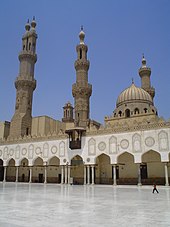


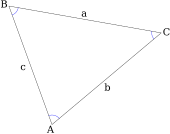
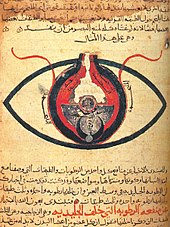
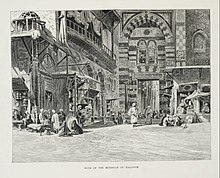
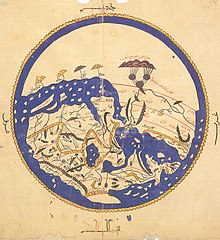
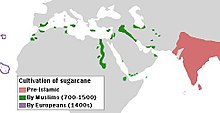

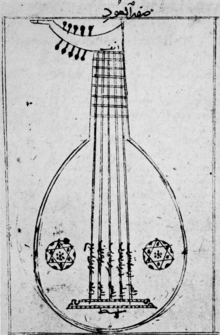
al-Zahrawial-BiruniIbn al-NafisAvicennaAverroesIbn FirnasAlhazenMuhammad al-IdrisiIsmail al-Jazarial-Jahizhistory of IslamAbbasidHarun al-RashidHouse of WisdomscholarsMuslim worldBaghdadArabicPersianMongol invasionsSiege of BaghdadTimurid Renaissancegunpowder empiresgolden ageIslamic historyOrientalismDamascusFirst FitnaastrolabeRashidun caliphscrusadesal-Ma'munIslamic empireCaliphatesMuhammadRashidun CaliphateUmayyad CaliphateIslamic attitudes towards scienceQuranicHadithTranslation MovementMedical Research CouncilHunayn ibn Ishaqlibraryal-Mansuracademy of JundishapurGreek contributions to the Islamic worldIndian influence on Islamic scienceChristian influences on the Islamic worldChinese influences on Islamic potterySyriacMiddle PersianSanskritHebrewChristiansChurch of the EastNestoriansUmayyadsAbbasidsGreek philosophersancient sciencephilosophyscienceYusuf Al-KhuriAl HimsiQusta ibn LuqaMasawaiyhPatriarch EutychiusJabril ibn BukhtishutheologyphysiciansAssyrianBukhtishuChristianSchool of NisibisSchool of EdessahospitalByzantine medicineHippocratesAristotlePtolemyArchimedesPersiansscientistsBernard LewisMongol destructionMongol ruleTimurid dynastywriting systemintroduction of paperSamarkandKhorasanAl-AndalusIberian peninsulaparchmentpapyrusEuropeMadrasaal-ZarnujiAl-Azhar MosquetafsirsocializationmadrasasUniversity of Al KaraouineThe Guinness Book Of RecordsAl-Azhar UniversityFatimidFatimahtrade languageCórdobaConstantinopleSharialegal schoolstheory of Islamic jurisprudenceabrogatedijmaʿijtihadTwelver ShiamuftisfatwasjudgesqāḍīIslamic theologyahl al-hadithAhmad ibn HanbalMu'tazilites

